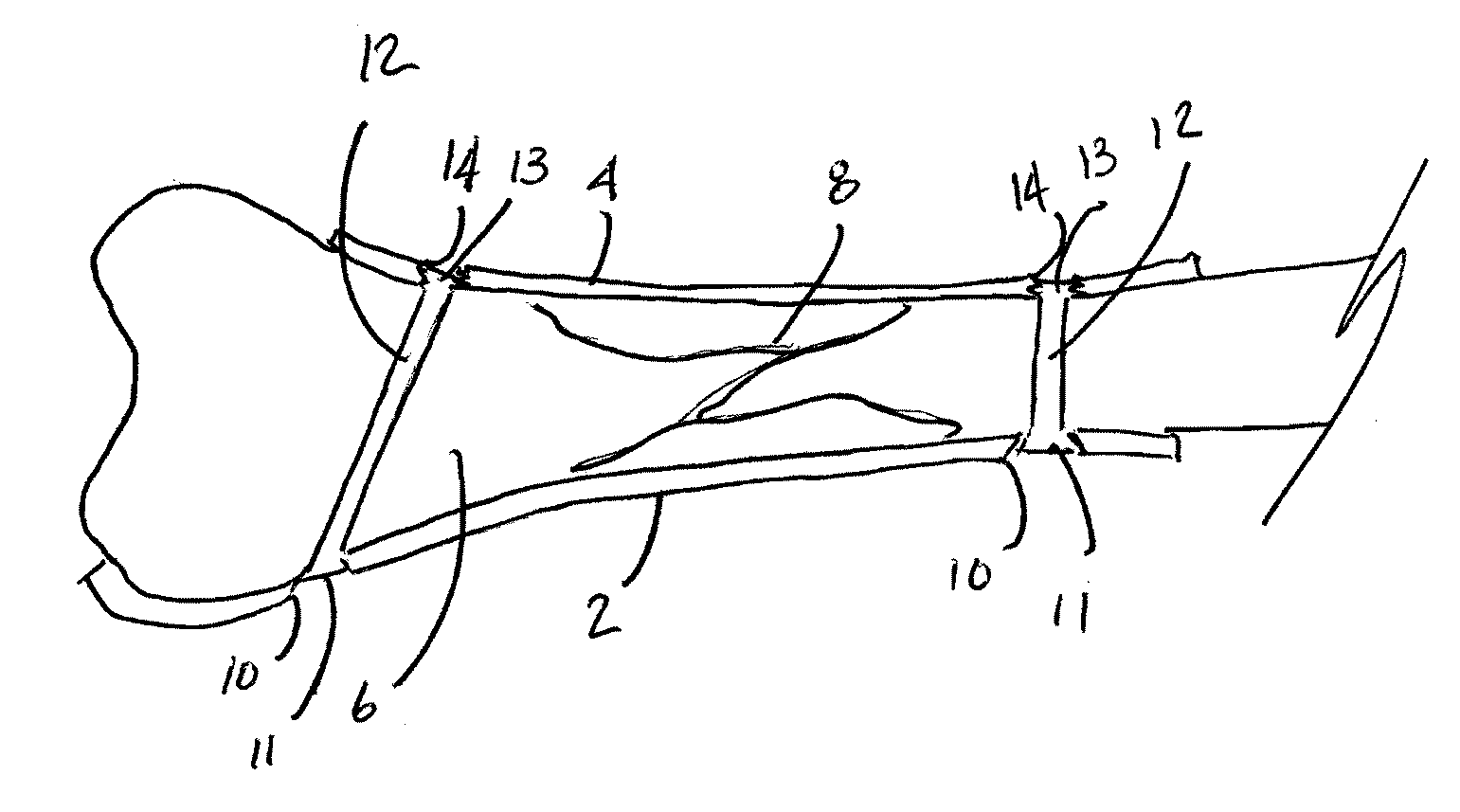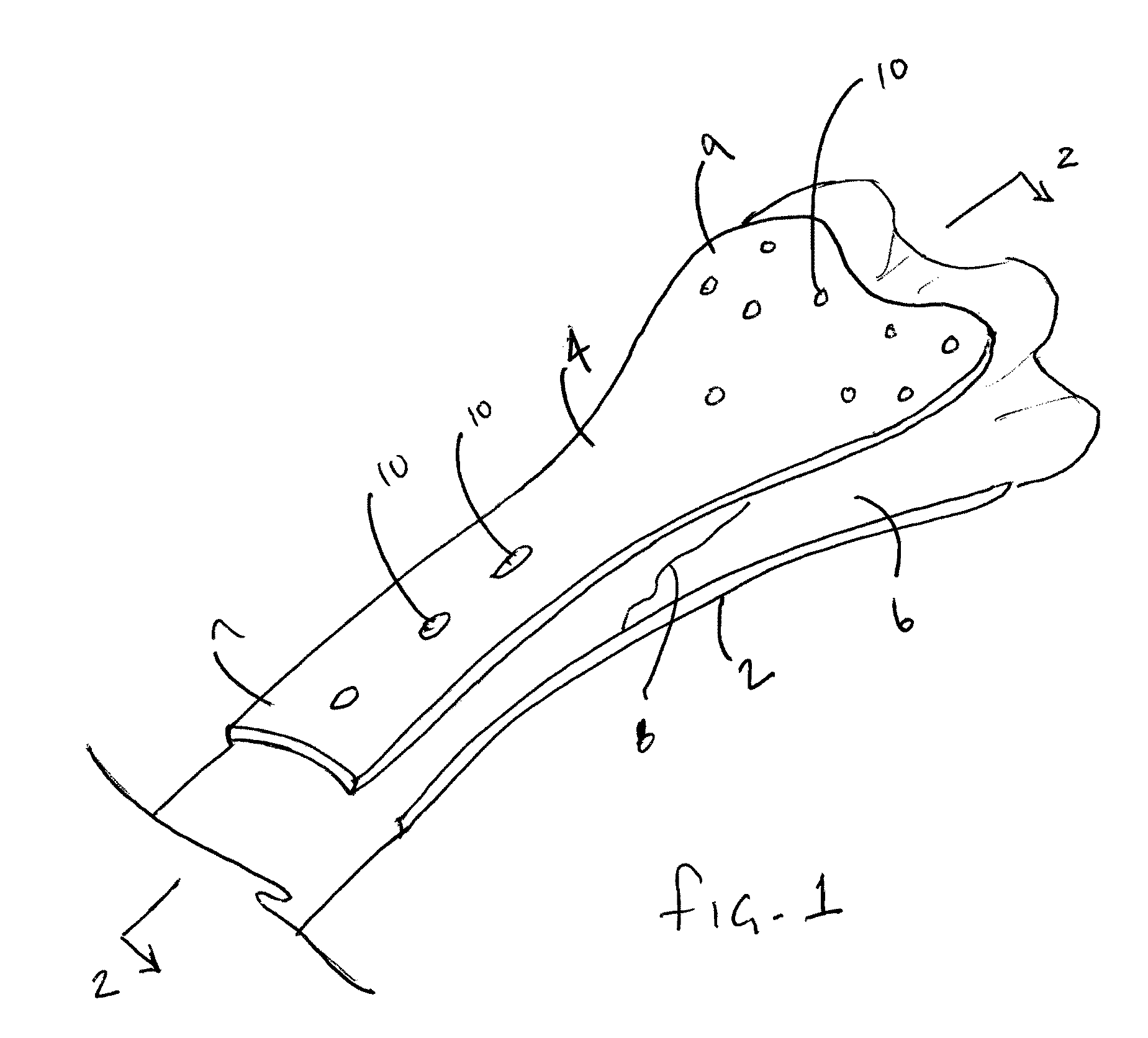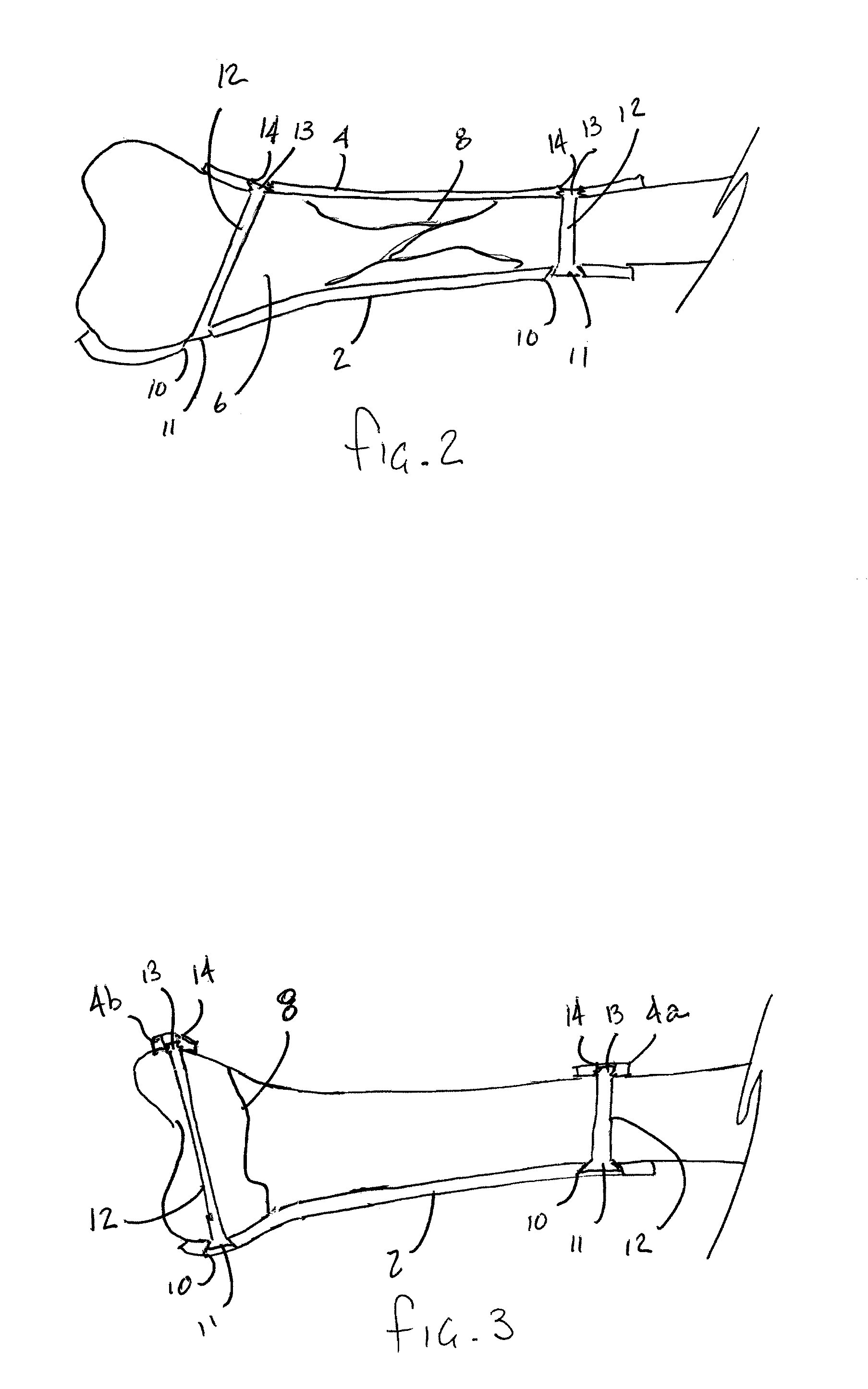System for making a bone repair
a bone repair and bone plate technology, applied in the field of bone repair systems, can solve the problems of affecting the repair effect, requiring a fairly invasive process, and unable to fix dorsally displaced bone fragments using bone plates, etc., and achieves high stability, effective bone repair, and high stability. the effect of structur
- Summary
- Abstract
- Description
- Claims
- Application Information
AI Technical Summary
Benefits of technology
Problems solved by technology
Method used
Image
Examples
Embodiment Construction
[0021]Now referring to the drawings, the bone repair system of the present invention is shown and generally illustrated at FIGS. 1-5 while the method of the present invention is depicted at FIG. 6. Generally, the present invention is directed to a bone repair system that employs two complimentary opposing plates to buttress a fracture from both sides of a bone. In one example, in a repair involving a wrist fracture, the plates are affixed to one another using screws that are installed from a volar plate, through the bone and into the dorsal plate. The use of these complimentary volar and dorsal plates creates a highly stable repair structure while requiring fewer screws thereby minimizing the degree of soft tissue dissection.
[0022]Turning now to FIG. 1, in the preferred embodiment of the present invention two complimentary opposing bone plates 2, 4 are employed on opposing sides of the bone 6 having the fracture 8 to be buttressed. While the bone 6 to be repaired as depicted in FIG....
PUM
 Login to View More
Login to View More Abstract
Description
Claims
Application Information
 Login to View More
Login to View More - R&D
- Intellectual Property
- Life Sciences
- Materials
- Tech Scout
- Unparalleled Data Quality
- Higher Quality Content
- 60% Fewer Hallucinations
Browse by: Latest US Patents, China's latest patents, Technical Efficacy Thesaurus, Application Domain, Technology Topic, Popular Technical Reports.
© 2025 PatSnap. All rights reserved.Legal|Privacy policy|Modern Slavery Act Transparency Statement|Sitemap|About US| Contact US: help@patsnap.com



